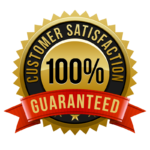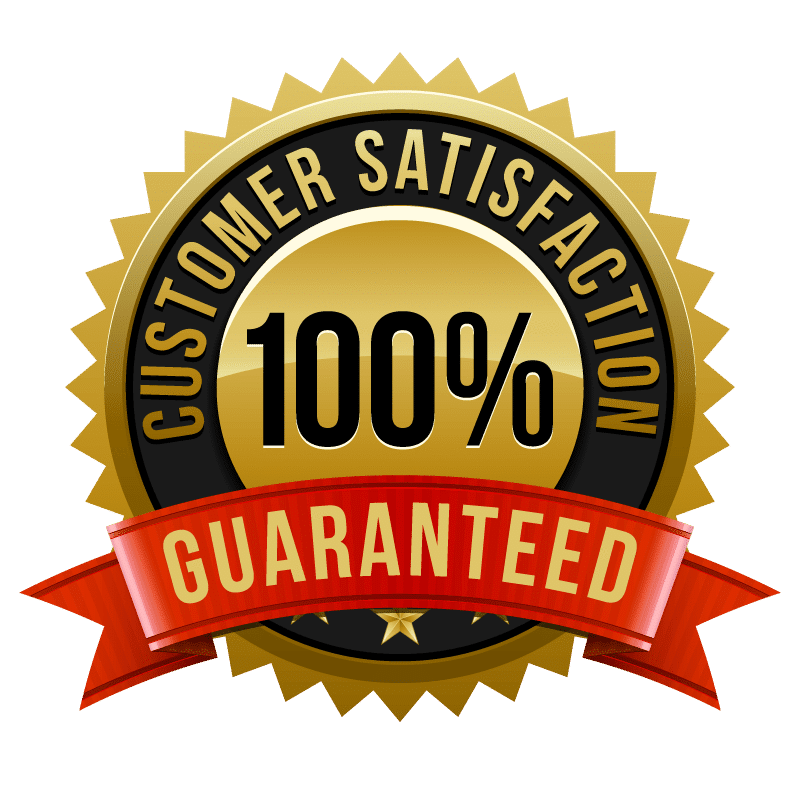9000th Customer Appreciation Sale
Join now and save up to 50% per month.
SEO Terminology
SEO is all that we do and our only goal is to stay focused on your company SEO success

Search Engine Result Pages (SERPs)
A search engine results page (SERP) is the list of results that a search engine returns in response to a specific word or phrase query. Search engine search results give you two types of results: organic and paid.

Paid Search Results
Paid search advertising, for example Google AdWords, is a type of digital marketing strategy that allows companies to pay search engines to place their ads higher on relevant search engine results pages (SERPs) with the goal of driving traffic to their site. Pay-per-click — or PPC advertising — is the most common form of paid search. Using a PPC campaign means companies don’t pay anything until someone clicks on their ad. This makes it an affordable way to advertise and ensures your ads reach users who are actively searching for your company’s services or products.

Organic Search Results
Unlike paid search results such as Google AdWords, organic search results appear within search engine result pages (SERPs) naturally, whereby no fee was paid to directly force your listing to display in the search results. By using our SEO methods, your website will show a measurable increase in website score and yield higher rankings within the organic search results.

Keywords
SEO keywords, also known as keyphrases, are words or phrases that are added to online content to improve search engine rankings. Keywords are typically short, simple phrases that people use to find information or answer questions in search engines. Most keywords are discovered during the keyword research process and are chosen based on a combination of search volume, competition and commercial intent. Keywords are one of the most important factors in quality SEO, yet amateur mistakes can lead to less effective on-site and off-site SEO. The problem is, often during the keyword research process, website owners will choose keywords that are too specific to what they offer and do not take into consideration what the typical user would actually search for. Instead, you want to do your best to keep your keywords more user-centric. For example, suppose you are a chiropractor, the mistake would be to use terms like “Therapeutic Exercises”, “Therapeutic Stretching”, and “Spinal Traction” as these would be professionals-centric terms and not what the typical user would search for. Your goal is to choose keywords your users would be more likely to search on, such as “lower back pain” and “neck injury”.

Website Link Anatomy
Linking from one website to another is at its core what makes the internet what it is today. The act of linking websites together consists of two parts. The first of these is the link itself, also called a hyperlink or URL (Uniform Resource Locator), which is a text string that describes the location of a specific resource on the internet. Accessing a link from a website requires linking text that is clickable and can take you to the new location on the internet. The linking text, also known as anchor text, is the visible word or phrase that can be clicked on within a website to visit a website link. Anchor text is usually highlighted and underscored as to make it stand out from the regular non-clickable text on a webpage

Backlinks

Unique Referring Domains
A referring domain is the name of the website providing a backlink to your website. So if a website has 1000 backlinks, it also has 1000 referring domains. A unique referring domain is any individual domain name that links to a website regardless of how many times that website links to that website. So even though a website might have 1000 backlinks, some of those backlinks probably come from the same referring domains which means the count of unique referring domains will always be less than the total number of backlinks. The problem is, increasing the number of backlinks to a website won’t significantly impact your SEO if you aren’t also increasing the number of unique referring domains. Thus, getting one website to link to a website 100 times isn’t nearly as powerful as getting 100 different sites to link to a website once. The ratio between unique referring domains and your total number of backlinks is a very important factor in improving your website SEO ranking. The ratio of backlinks to unique referring domains is the number of backlinks divided by the number of unique referring domains. For example, if a website has 100 backlinks from 20 unique referring domains, the ratio is 5:1. Many SEOs consider the ideal ratio of backlinks to referring domains is 1:1, but it’s nearly impossible for a website to have this ratio. It is widely accepted that a higher percentage of unique referring domains can positively impact search engine rankings. There is no industry standard for the best ratio, but our best practices estimate is somewhere between 4:1 and 10:1 for most websites.

DOFOLLOW BACKLINKS
Dofollow links tell Google the linking website trusts your domain, which can help your rankings. A dofollow link is a link that helps in terms of SEO by passing the authority of the origin site to the destination site. This passing of authority is called, “link juice.” Acquiring dofollow backlinks will help improve a website’s Domain Rating (DR), Domain Authority (DA), which in turn, helps to improve keyword ranking.

NOFOLLOW BACKLINKS
Nofollow backlinks tell Google that this backlink should not pass on value (sometimes called link juice). In other words, nofollow links still take someone from Website A to Website B, but nofollow links won’t help Website B’s in terms of SEO.
Google introduced nofollow links in 2005 for bloggers that were struggling with people using comment spam to try and build links in the hope of ranking for specific keywords. More recently Google has been treating the nofollow links as a hint for indexing and crawling but still nowhere near as important as dofollow links.
Since Google does not assign much value to nofollow links, many people believe that link building only matters if they are dofollow links. While quality dofollow links are preferred for SEO, there are still clear benefits to getting nofollow links. Those benefits include increased traffic, brand exposure, trust building, and a natural backlink profile.

BACKLINK PROFILE
A backlink profile is a measure of the characteristics of the backlinks pointing to your website. Your website backlink profile is an extremely important metric that should not be overlooked as Google can easily determine if your backlink profile appears abnormal and penalize your SERP. If you want to get found online, you need a strong backlink profile. Website backlink profile is composed of three sub components, dofollow profile, domain quality profile, and anchors profile.
Dofollow profile is the relationship between the amount of total dofollow and nofollow links to your website. A natural backlink profile will always include both dofollow and nofollow links so it would be unrealistic and look artificial if your website has only dofollow links or only nofollow links. Any website that has a lot of backlinks but the percentage of dofollow links is below 20% or greater than 90% could be considered by Google to contain fake backlinks. As a reference, most of the largest websites on the internet collectively have a ratio of about 80% dofollow backlinks to 20% nofollow backlinks on average. Dofollow examples include youtube.com 77%, amazon.com 78%, linkedin.com 78%, facebook.com 84%, and apple.com 85%. For a typical website with 5,000-10,000 backlinks you could expect that your dofollow backlink percentage to be closer to 50%.
Domain quality profile is a measure of the collective quality of all the backlinks pointing to your website. A backlink is considered to be a quality website backlink when the website providing the backlink also has a lot of backlinks pointing to it. The quality of a backlink is also further improved by the relevance of the backlink to your website. The standard measures for determining the quality of backlinks are a website’s Domain Rating and Domain Authority. A website with thousands of low-quality backlinks, with little to no medium- and high-quality backlinks, will perform poorly in Google organic search results.
Backlink anchors profile is a measure of the relevance and diversity of the anchor text of the backlinks pointing to your website. The diversity of backlinks needs to be a mixture of natural anchors, blended anchors, and exact match anchors.
Natural anchors are anchor texts that do not contain any key phrases. Examples for this site would be “joseone” , “JoseOne”, “Jose One”, “joseone.com”, or “https://joseone.com”. Basically your brand name, the full URL of the page being linked to, and possibly random phrases such as “click here” or “this article.”
Blended anchors are anchor texts that have all or part of your key phrase and then other words in the anchor as well. For example, if your key phrase was “diamond rings,” a blended anchor might be “a good selection of diamond rings.”
Exact match anchors are when you use your key phrase by itself like “diamond rings”.
Some businesses want to rank for a particular key phrase so badly they make the mistake of building a lot of exact match anchor backlinks. But, this is can be a huge mistake as it would be very unnatural.
In a #1 ranked anchors backlink profile, Google expects to see less than 10% of backlinks be exact match anchors. To make your profile look as natural as possible you want about 60% natural anchors, 35% blended anchors, and 5% exact match anchors.

Out Bound Links
Out bound links (OBL) are links on your website that point another website. Basically out bound links on your website are backlinks to the website you’re linking to, whereas backlinks to your website are out bound links from other websites. Out bound links are often used to connect and direct readers to external resources such as websites, articles, and other publications. Out bound links are often referred to as “authority links” because writers often use outbound links to verify information in their articles. The number, quality, and context of your outbound links can have a positive impact on your SEO.

URL & Domain Rating

Page & Domain Authority

Google PageRank

Semrush Authority Score

Alexa Traffic Rank
Alexa Traffic Rank, founded in 1996 and terminated May 1, 2022, was a marketing tool owned by Amazon.com that estimated website traffic thus a measure of a website’s popularity. Every day, Alexa ranked millions of websites according to traffic data from the previous three months. The resulting Alexa Rank metric showed how a website compared to others on a scale of roughly 10,000,000 down to 1 with 1 being the most popular website. For an average small company, an Alexa Rank of 2,000,000 is considered average, 1,000,000 is considered good, 500,000 is considered very good, 200,000 is considered great, 100,000 is consider exceptional. Typically only large companies would likely rank better than 100,000.
So what made Alexa ranking important or valuable? Many advertisers considered Alexa ranking when evaluating a website or blog for possible media buys. Potential advertisers would often tell you to increase your Alexa ranking before they will come on board with a long-term ad campaign. So if you would like to sell more advertising on your website or blog, you were encouraged to consider improving your Alexa ranking. Ironically many SEO professionals had concerns as to the true value of Alexa ranking as they contend that it can be easily gammed to improve your score. So from an SEO point of view, JoseOne looked at Alexa Rank is an indicator of your websites real traffic. Since Alexa has now been terminated, anyone pushing Alexa rankings is selling false SEO services.

100 Point Scoring System

Calculate Website Score
JoseOne calculates your website score using a collection of industry standards ranking metrics across multiple well respected SEO ranking tools. A website’s score is a sample of the website’s backlinks total, unique referring domains, URL Ranking (UR), Domain Ranking (DR), Page Authority (PA), and Domain Authority (DA). There are several free online tools you can use to estimate your website score by checking your rankings individually. Below are two of the most popular methods for checking your website SEO ranking:
Page Authority, and Domain Authority can be found here:
moz.com/domain-analysis
Get Started Today!
Are you ready to improve your search engine optimization for your website? Then you have come to the right place! Order now and let’s get started Today!

ONE MONTH - Guarantee
JoseOne is committed to over delivering on all our SEO packages regardless of the subscription you choose. However, because there are so many unknowns within the SEO World and major players like Google often change the rules without notice, JoseOne cannot guarantee results. We do however, for the first month only, offer a one-month money-back guarantee if your website doesn’t show a measurable improvement that meets your satisfaction. You must request a refund within 45 calendar days of your original purchase date. However, if you are satisfied with your first month’s results, but choose not to continue your SEO campaign, we will gladly provide you an additional month of SEO services for free as our gift to you. If you purchased more than one month, you will only be entitled to receive a refund for the first month, but you will always be granted an additional free month of SEO services upon request. By making your first payment, you agree to these terms. We track total backlinks, unique referring domains, Ahrefs Domain Rating (DR), Moz Page Authority (PA), and Moz Domain Authority (DA) as well as other metrics on a monthly basis. We provide all of our clients an SEO Scorecard for your website via email that is dynamically updated monthly. You can request not to receive the monthly update as well if you prefer.

9000th Customer Appreciation Sale
We are excited to have received our 9,000th subscriber this month. Save up to 50% off our regular rates for a limited time.
